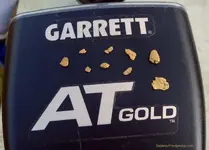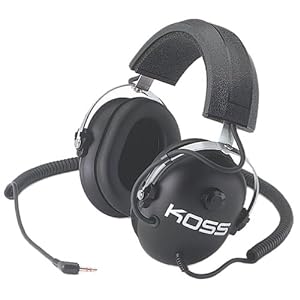That is enough questions for a book!
Detecting for flood gold is a waste of time. Flood gold is too small to be detected, even in concentrations in the ground. You need to do research, and you need put yourself in locations where people have found match head size and larger gold in the past. Chances are the area has been hunted before, so you are going to have to hunt hard and long. Nugget detecting is not easy and takes a great deal of patience and persistence. If all your location has is flood gold stick with the sluice box.
I am not an expert with the AT Gold and as is often the case just got one to try it out. I have access to good areas and I can find gold with just about any decent metal detector. I found the AT Gold in my own words to be "just another mid-frequency detector". We need some kind of acronym for that phrase. In other words, take a 14 kHz MXT, a 17.8 kHz Lobo, a 19 kHz Gold Bug Pro, an X-Terra 705 set up with 18.75 kHz coil, and 18 kHz Garrett AT Gold, and put the smallest coil available on all of them. Mind you i am only naming a few if the more popular mid-frequency models available. From my stand back and take a breath perspective they all get about the same performance. People including myself discuss day in and day out the tiny differences in performance between them but they are so close it boils down to whatever extra features they offer that a person might want. A proficient detectorist can grab any one of them and do about as well from a depth and sensitivity perspective.
It is all getting kind of ho-hum since the technology in mid-frequency detectors has maxed out and we see endless permutations of what is basically the same detector.
I have several detectors already that do what the AT does. I really do admire what Garret has done in offering a detector with a waterproof speaker and full feature set at a bargain price. But for me to keep a detector it has to do something I can't already do with the detectors I already have and I could not say that about the AT Gold, so I sold it.
Do not let that discourage you though. As I noted the AT does about as well as anything in its class. It is truly you that will make the difference. It is about how much time you take to practice with and test the detector in the field to seek the answers you want about its performance. Honestly, people ask too many questions on the Internet and the answers from people on the Internet are just opinions. You do not need my opinion or anyone else's. You own the detector. Take it out and spend an entire day with test targets evaluating its performance in your own soil. You want to know how it sounds on small gold versus ferrous trash, go find out for yourself because anything I tell you applies only to me and my targets in my dirt. Frankly, anyone not interested in taking that time and putting in that effort and learning their machine themselves just failed at step one of successful nugget detecting. Learn your detector, with it in your hands, in the field.
Then put yourself on ground where your diligent research has revealed nuggets are lurking and get down to business. And when I am in nugget ground that means putting my coil over every square inch of detectable ground. When you are in an area with nuggets, they can lurk in the most surprising places, so I do not think too hard on that. I just put the coil over everything I have time to put it over.
And that, my friend, is how you go find gold nuggets with a metal detector. Good luck!




 .
.
